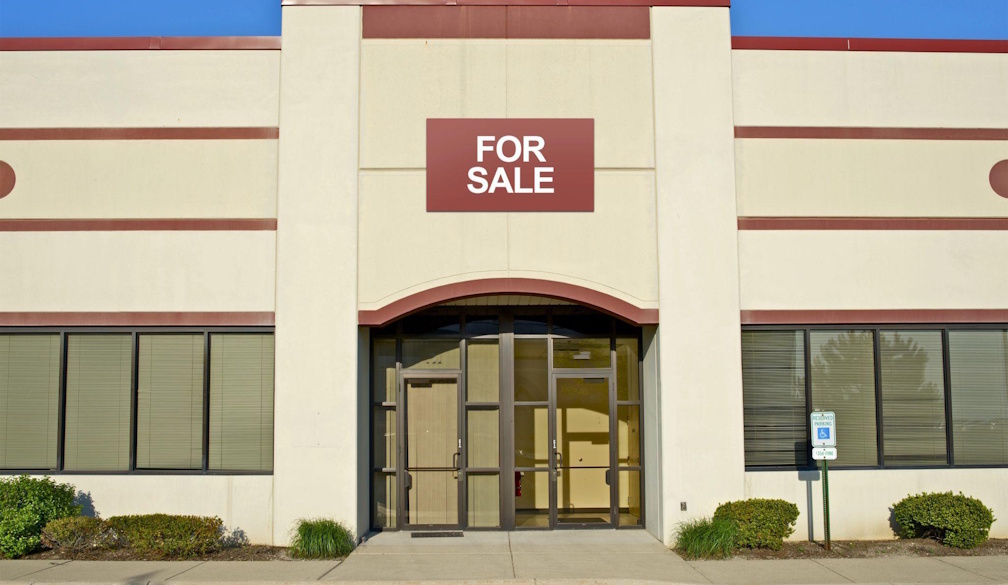Restoring Australia’s Past: Timeless Materials & Techniques in Heritage Conservation

Heritage restoration balances the need for maintaining historical authenticity and structural integrity for generations to come. Heritage work differs from modern construction, as it calls for specialized knowledge of traditional building techniques, materials suitable for the time period, and conservation ethics. Each project is unique, requiring thoughtful analysis, masterful craftsmanship, and utmost respect for the original craftsman's vision.
Knowledge of the fundamentals of heritage restoration makes it easier for owners of properties to decide on the restoration of their old buildings. Whether restoring a Victorian-era terrace house, an Art Deco apartment block, or a colonial homestead, the method must respect the past while conforming to current safety and performance standards.
Understanding Heritage Building Materials
Heritage buildings feature materials and construction techniques developed through centuries of experimentation and refinement. The old materials tend to exhibit incredible durability if properly cared for, with many of the buildings remaining well beyond their designed life through prudent care.
Stone masonry was the basis of most early buildings in Australia, from Sydney's local sandstone to Adelaide's limestone and Melbourne's bluestone. All these stones need special restoration techniques because their porosity, hardness, and weathering properties are drastically different. Sandstone weathers due to salt crystallization and pollution and needs gentle cleaning with occasional replacement of the extremely damaged stones.
Brick building predominated city growth from the mid-19th century until World War II. Heritage bricks usually were fired at lower temperatures than contemporary alternatives, resulting in softer, more permeable materials that breathe naturally but need to be handled softly when restored. Mortar joints between bricks frequently give them their essential structural stability and therefore have to be examined thoroughly before even the slightest repointing takes place.
Timber framing is another pillar of Australian heritage building. The early architects employed native hardwoods such as ironbark, spotted gum, and red gum due to their high strength and durability. These timbers, if seasoned and well joined, will last for centuries if properly maintained. Replacement timbers today, however, have to match not just species but also orientation of grain and moisture content to avoid differential movement.
Cast iron found favor in the Victorian period for structural and decorative purposes. Verandah posts, balustrades, and ornaments reflect the industrial prowess of the period while creating useful building units. Restoration entails knowing about the composition of the iron since early cast iron has a very different nature compared to later wrought iron both in terms of properties and restoration methods.
Traditional Lime Mortars and Pointing
Lime mortar represents perhaps the most critical element in heritage masonry restoration. Unlike modern cement mortars, lime-based systems remain softer than the surrounding masonry, allowing the mortar to act as a sacrificial element that protects more valuable stones or bricks from damage.
Hydraulic lime mortars harden by carbonation rather than hydration, forming permeable joints that can handle movement of the building while permitting moisture vapor to permeate. This is a critical property for heritage buildings, which do not have contemporary moisture barriers and must turn to material permeability to manage moisture.
Hot lime mortars, which are prepared on-site from quicklime slaked with water, offer the best approximation of original methods of construction. These mortars gain stronger adhesion and better workability than pre-hydrated equivalents, but are associated with specialized expertise and protective precautions when preparing and applying them.
Color matching involves precise examination of source mortars using lab testing or visual examination. Sand choice impacts color and performance, with local sands usually offering the optimum color match for regional traditions. Angular sands produce more cohesive mortars, whereas rounded sands enhance workability but potentially reduce durability.
Pointing techniques must replicate original profiles and tooling marks. Flush pointing suits many Georgian and early Victorian buildings, while weatherstruck pointing appeared later in the Victorian period. Ribbon pointing, popular in some regions, requires specialized skills to achieve authentic appearance and weathering characteristics.
Authentic Timber Restoration Techniques
Timber restoration in historic buildings requires knowledge of traditional joinery techniques, wood species properties, and historic building construction. Contemporary power tools and synthetic adhesives, although convenient, might not offer suitable solutions to heritage timber work.
Conventional joinery methods such as mortise and tenon, dovetail, and scarfed joints were designed with flexibility for timber movement yet with great strength. Restoration processes ought to duplicate these joints wherever practicable, utilizing hand tools and the conventional methods to achieve original construction quality and look.
Timber repair methods vary from conservative consolidation treatments to the selective replacement of damaged sections. Consolidation with suitable resins can stabilize distressed timber while maintaining original material. Over-consolidation, however, can produce hardened areas that stress-concentrate in adjacent timber and thereby create new issues.
Scarfed repairs provide replacement of the damaged timber sections with the preservation of sound material. Classic scarf joints such as the tabled splice or bladed scarf effectively spread loads while preserving traditional construction practices. These repairs demand exact hand cutting and fitting to meet appropriate structural performance.
Species matching becomes essential when replacement is needed. Salvaged lumber from building demolition sites might yield superior matches to newly purchased lumber, with comparable grain orientation, density, and weathering patterns. Salvaged lumber, however, must be examined carefully for defects, prior alterations, and compatibility with the existing structure.
Surface finishes should be sympathetic to past practice and material properties. Much heritage timber remained uncoated or was treated with minimal oil-based treatments. Contemporary polyurethane and acrylic finishes, although tough, produce unsuitable appearances and could hinder good timber breathing.
Metalwork Conservation and Restoration
Heritage metalwork includes both structural and ornamental components, each having unique restoration techniques. The composition of the metal, the manufacturing process, and corrosion processes inform proper treatment strategies.
Cast iron restoration starts with careful cleaning to evaluate the level of corrosion and structural stability. Low-pressure water washing or chemical paint stripper is gentle enough to maintain surface detail while stripping away damaging coatings. Abrasive cleaning methods will ruin fine surface details and must not be used where decorations are involved.
Structural welds or mechanical fastening may be needed for structural repairs, but these procedures need to be chosen very carefully for their long-term impact on the material in the surrounding area. Cold repair methods with special metal-filled epoxies can treat low-level flaws without applying heat that could lead to warping or cracking.
Wrought iron is very different from cast iron in composition and working characteristics. Its fibrous grain structure gives it high tensile strength but causes it to be prone to delamination along the grain boundaries. Repairs must flow with the material's natural properties, not against them.
Conservation protection coatings for historic metalwork have to balance both conservation needs and functional durability. Classic linseed oil-based paints are very protective with good appearance and reversibility. New high-performance coatings will be more durable but may produce maintenance issues if they're not compatible with traditional substrates.
Specialized skills are needed for lead work, especially in roof applications, both for safety and technical considerations. Hand tools and traditional lead working methods with wooden forming blocks yield better results than contemporary mechanical forming techniques. Jointing correctly guarantees weathertight details that allow for thermal movement.
Roofing Materials and Methods
Heritage roof coverings are intricate combinations of material and detail evolved through generations of hands-on experience. Repair has to take into account not just single materials but also how they work together as complete weatherproofing systems.
Slate roofing ruled high-quality construction during the Victorian period, with Welsh slate being the best choice for consistent quality and appearance. Replacement slate needs to be a close match not just in color and texture but in thickness and fixing as well. Original snow guards, ridging materials, and valley details demand specialized expertise for true restoration.
Clay tile systems differ considerably from one period and area to another. Ancient tiles were typically handmade, with asymmetrical shapes and colors that add to their charm. Current replacement tiles, though technologically superior, might not possess the appearance that characterizes heritage buildings. Finding suitable replacement tiles might mean using specialist suppliers or salvage operations.
Timber shingle roofs, although less frequent in Australian heritage structures, need to be understood in terms of historical splitting, installation, and maintenance practices. Cedar shingles should be correctly graded and installed with proper ventilation to become long lasting. Modern additions such as timber battens may be used alongside traditional roofing techniques in sympathetic restorations, providing durable support and maintaining a traditional aesthetic while meeting contemporary performance standards.
Metal roof systems consist of sheet materials and shaped components such as guttering and downpipes. Modern alternatives to traditional terne-coated steel and lead-coated copper offer realistic appearances but have specialized suppliers and techniques of installation. Modern replacements need to be chosen with care to offer suitable visual properties.
Modern Challenges in Heritage Work
Modern building regulations and standards may clash with heritage authenticity and necessitate inventive solutions that meet both preservation and safety objectives. Fire safety, accessibility, and energy efficiency upgrades need to be incorporated carefully to avoid visual intrusion on heritage fabric.
Moisture management in heritage buildings requires understanding traditional construction methods and their inherent moisture handling characteristics. Modern interventions like vapor barriers or synthetic sealants can disrupt traditional moisture movement patterns, potentially causing new problems in unexpected locations.
Environmental considerations increasingly influence heritage restoration decisions. Balancing conservation goals with sustainability objectives requires careful analysis of material choices, energy performance, and long-term maintenance requirements.
Documentation and recording techniques have evolved significantly, with photogrammetry, 3D scanning, and digital modeling providing unprecedented accuracy in recording existing conditions and planning restoration work. These tools support better decision-making while creating valuable archives for future reference.
Quality Control and Craftsmanship
Heritage restoration demands exceptionally high standards of craftsmanship and attention to detail. Unlike new construction, there are no opportunities to hide or correct substandard work through subsequent trades or finishes.
Heritage experienced specialist contractors yield the optimal results for intricate restoration work. They are able to respond by giving expert consideration to original materials and techniques, right tools used, and working practices in order to achieve genuine results that respect the original craftsmen's intent.
Quality control standards have to go beyond standard construction practices to encompass heritage-specific requirements such as color matching, texture replication, and construction detail authenticity. Work is ensured to be of both structural standards and conservation standards through regular inspection and testing.
Heritage trade training and skill development involves continued investment, since traditional knowledge and techniques are lost without deliberate efforts to preserve and pass them on to future generations of craftspeople.
The proper materials and techniques are important to achieve enduring restorations. Collaborating with heritage architects involves applying techniques from lime mortar and hand joinery to sympathetic metalwork preserving structure and storytelling for centuries to come. Appreciation of these historical methods not only achieves restoration results but also sustains the cultural and historical significance that makes heritage buildings invaluable community assets.










